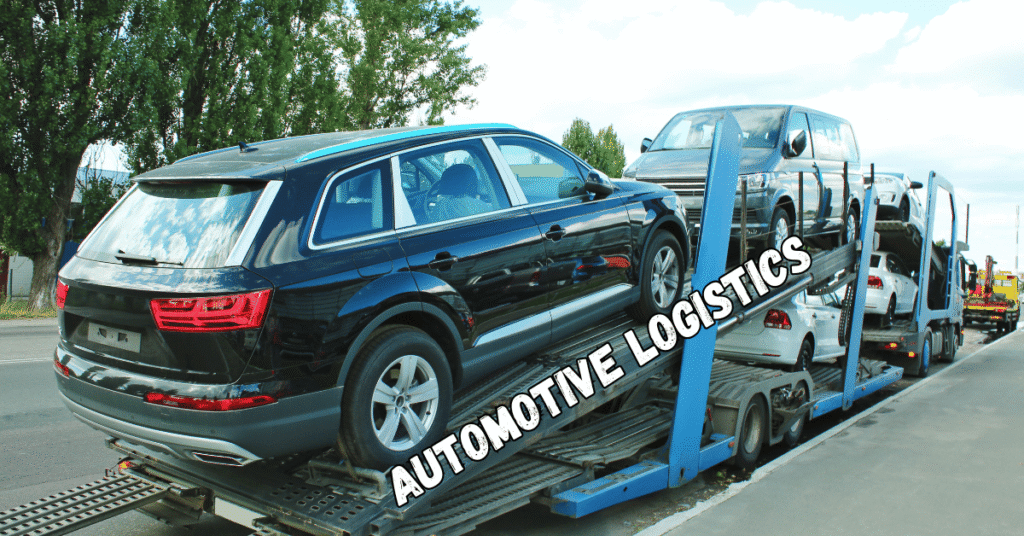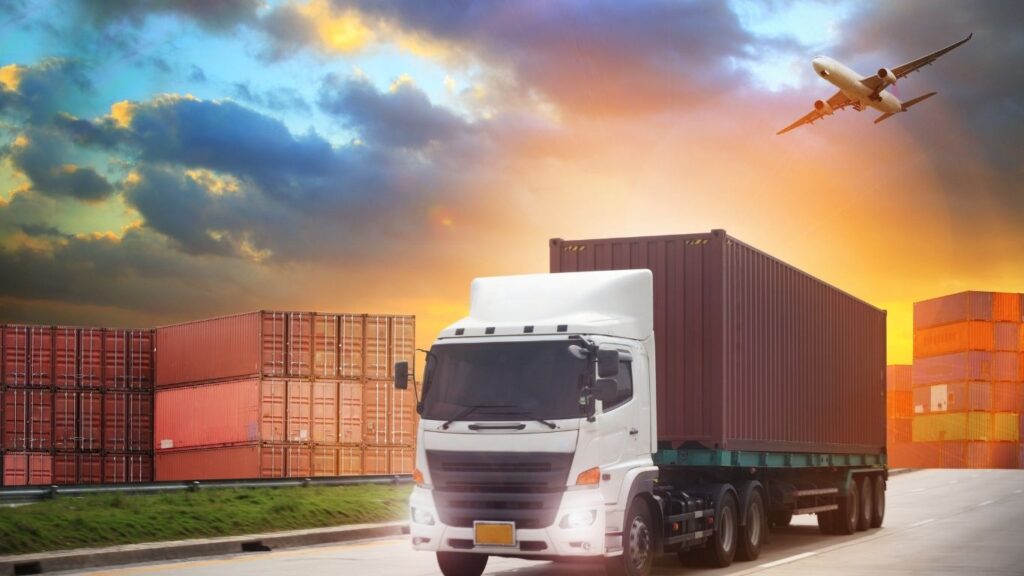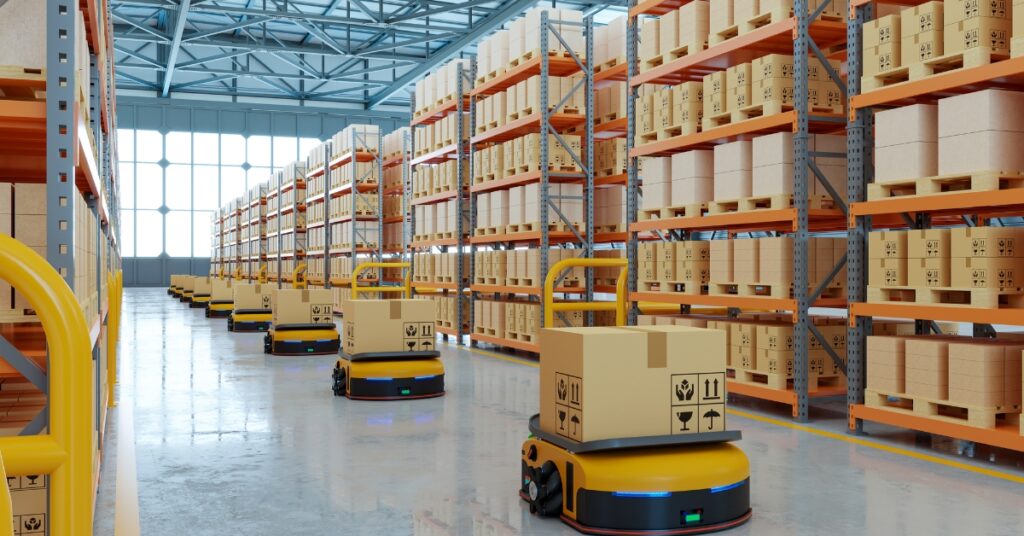1. Introduction to Automotive Logistics.
Car logistics involves planning, implementation, and control of storage and movement operations for parts, components, or complete vehicles along the supply chain. In the automotive industry, it has a crucial role to play in punctual production, effective distribution, and optimal inventory.
This may be as inclusive as transporting raw materials to manufacturers or even the movement of cars to dealerships through a very strong system of car logistics.
2. The Role of Logistics in the Automotive Industry.
Logistics could best be termed as life lifeline of the automotive industry, but then other pieces are quite as crucial. For instance, combining just-in-time (JIT) production models and global sourcing philosophies will deliver the right piece at the right time from the correct place.
Key Functions
- Inbound Logistics: Moving raw materials and components to the plant.
- In-plant Logistics: Material movement within the manufacturing plant.
- Outbound Logistics: Deliveries of completed vehicles to the distributor, the dealer, or the customer.
- Aftermarket Logistics: Deliveries of spares and auxiliary components.
Simply put, automotive logistics would guarantee continuity of production, cost-effectiveness, and customer satisfaction.
3. Key Components of Automotive Logistics.
Fundamental knowledge of the elements of automotive logistics negates prolonged time by their activity and maximizes them.
Inbound Supply Chain
This segment comprises receiving and freight transporting items like engines, transmissions, and electronics to manufacturing plants. Key elements are:
- Supplier Coordination
- Real-time tracking of inventories
- Customs clearances for global shipments
Production Logistics
Most of all brings seamlessness to production processes:
- Line-side deliveries, Automated guided vehicles (AGVs).
- Inventory management systems.
Outbound Logistics
Onto remarked on that.
Reverse Logistics
And that is also how auto makers have been dealing with returns: Refurbishment and recycling of faulty parts, Warranty claims.
Aftermarket Services
Therefore, after-market logistics systems are effective as they can provide a fast delivery of spares and an effective management of dealers’ and repair shop stocks.
4. Challenges in Automotive Logistics.
Supply Chain Disruption.
Natural disasters, pandemics, or civil war can all trigger disastrous and, at times, inevitable occurrences that lead to substantial liabilities, and while production has to be held back, supply chains still get impacted.
Component Complexity.
It can be extremely logistical, as a single vehicle can have more than a single part procured from various corners of the globe.
Globalization
Manufacturing and distribution span continents. International logistics have now become even more complex with these additional elements:
Tariffs and imposed trade practices
- Customs formalities and
- Variations in transport regulations
Just In Time Pressures
Minimum inventory, therefore, still keeps businesses extremely vulnerable to holdups.
Sustainability Pressures
More pressure has been around the industry concerning the need to reduce carbon footprints and environmental burdens.
5. Technology Revolutionizing Automotive Logistics
a. Internet of Things (IoT): With IoT, web tracking of parts and vehicles, there are also integrated temperature, shock, and route performance sensors.
b. AI:
It aids cognitive processing:
- Demand forecasting
- Route optimization
- Inventory management
c. Robotics and Automation: This is a type of automated warehouse and robotic picking systems, quickly process and eradicate human error.
d. Blockchain: This is to enhance traceability, efficiency, and transparency throughout the entire pipe supply.
e. Transportation Management Systems (TMS): It can be said that it offers a means for the logistics team to plan, execute, and optimize real-time shipments.
6. Significance of Sustainable Logistics in the Automotive Industry.
Green Logistics.
Firms have started to adopt an environmentally friendly way of conducting business:
- Electric Delivery Trucks
- Route Optimization for Least Emissions
- Packaging Material that is Recyclable
- Reduction of Carbon Footprint
This needs to be declared by every corporate organization as part of their ESG targets in some manner in relation to emissions.
Conformity
- With that, logistics companies need to conform to lots of global environmental standards, for example, ISO 14001.
- Reintegration within the Circular Economy
- Used parts will be repaired and returned to the supply chain. Preventing waste and the expense of used products.
7. Automotive Logistics in Electric Vehicle Supply Chains
The development of EVs is designed to transform logistics processes.
a. Battery Logistics
Heavy, dangerous, and expensive, batteries need the following to be shipped:
Special containers, compliance with regulations (e.g., UN3480 for lithium-ion), and measurement and monitoring of temperature.
b. Supplier Ecosystem Transformation
Suppliers of electric drivetrain, charging parts, and software eliminate the need for replacement of older parts with newer ones.
c. New Distribution Models
Sometimes EV automakers will ship directly to customers without employing dealerships or sales dealership franchises to retail automobiles. Flexible logistics networks are needed to accomplish this.
8. Key Global Players in Automotive Logistics
Many organisations provide bespoke services in logistics to automotive customers.
- DHL Supply Chain: Full-service global freight and warehousing, and in-plant services for automotive original equipment manufacturers.
- DB Schenker: Global inbound, production, and aftermarket logistics solutions.
- CEVA Logistics: Leadership in automotive freight management and time-critical services.
- Kuhne Nagel: Growing to become a market leader in EV battery transport and supply chain optimization.
- Ryder: It is focused on just-in-time delivery and final-mile services to its carmaker customers.
These organizations are spending on emerging technology and going green, thereby remaining competitive.
9. Trends of the Future: Automotive Logistics.
- Autonomous Logistics: Automotive transport will feature autonomous delivery trucks and drones.
- Digital Twins: Firms will be able to test and optimize their supply chains by using digital replicas of their supply chains.
- Hyper Localization: Most producers are now shifting the adoption of their domestic providers and managers to reduce global dependence.
- 5G connectivity: It will enable the quickest data transmission that will employ the efficiency of tracking, communication, and automation.
- Vertical Integration: Increasing global auto titans are creating their own internal logistics networks to achieve greater control and minimize risk.
10. Conclusion
Automotive logistics is, in truth, the often-unheralded hero of the automotive industry. From sourcing parts to delivery, all produced cars depend on this well-oiled logistics network. No less so, logistics operations will change as the new vision of evolving vectors of electrification, digitization, and sustainability will demand. By combining smart shipping technologies, environmentally friendly processes, and faster production strategies with their operations, automotive logistics companies can contribute their helping hand towards driving the next wave of mobility effectively and responsibly.
FAQs Regarding Automotive Logistics
Q1: What is automotive logistics?
Automotive logistics would refer to the planning of all activities in the supply chain in relation to vehicles and components, production, distribution, and after-sales service.
Q2: Why is the automotive logistics industry?
Guarantee the timely manufacture, cost savings, just-in-time models, and improvement of customer satisfaction.
Q3: What will EV manufacturing do to logistics?
Introduce battery shipping, direct-to-consumer models, and new challenges for the supplier value chain.
Q4: What technologies are used in the automated use of automotive logistics?
There are IoT, AI, TMS, robotics, and blockchain that make operations more effective and transparent.
Q5: What are the challenges in automotive logistics?
A few of the underlying issues that affect the motor industry are global issues of supply chains, application of JIT models, environmental issues, and legislations.



